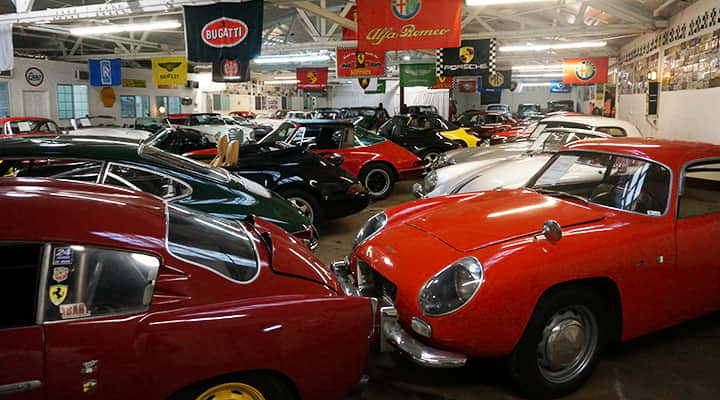
Honk For Tips on Storing a Car!
Mar 31, 2023 / Alyssa Duranty
Engine oil and transmission fluid run through retiree Bob Teal’s blood. He’s been a gearhead for decades, a hobby that rubbed off from his father. Growing up surrounded by great rides, he also had to become an expert at storing a car to keep it in good condition.
“My dad was a car nut; Every time I came home from school I found another car there,”; he said with a laugh. “I could drive whatever (car) I wanted to, but I had to repair what a broke. So I learned how to repair (and store) early,”; Teal said.
Teal is still driving, and of course storing cars, often looking for his next purchase at vintage car dealer Beverly Hills Car Club in Los Angeles, owned by Alex Manos. Both aficionados shared their tips with us for storing a car, whether a late model or a more vintage vehicle.
We also have a fun new car storage tips video, because there’s more to proper car preservation than just parking and hoping for the best!
Storing a Car Calls for Staying Away from Water
Teal now repairs and stores his collection of three American classic cars in a 3,000-square-foot warehouse in the Southern California desert that he shares with six other car enthusiasts. It’s far from damaging humidity and regular rain, but he suggests that drivers storing a car in wetter climates take measures to keep their vehicles dry.
“Moisture is an issue, and it’s a real enemy,”; he said. “Place a few dryer sheets on the floorboard to absorb the moisture and prevent mildew.”;
Manos, who also fell in love with classic cars thanks to his father, agreed and said if you live in a seaside town that you should store your car indoors and inland. “The sea dew builds up and creates rust, even in a dry state like California,”; Manos said.
It’s a good idea to thoroughly clean the interior and exterior of a car so spots don’t set, but be sure to leave plenty of time for it to dry before you store, to avoid water damage.
Store Your Car with a Tight Cover
Stray cats and street rats need a place to stay warm. Don’t let it be your car. A tight cover is very important when storing a car for any amount of time, Teal said. While he hasn’t found any vermin in his car, he’s known many people who have. A good car cover can help prevent this and a multitude of other unwanted issues.
“Cover the car, because shop dust will adhere to the finish,”; he said. “You want to make sure the passenger compartment is sealed up as much as possible. Close up the air conditioning vents.”;
Be sure to use a car cover, not just any tarp, which could leave scratches.
If you are storing the car indoors, consider opening a window a small crack, to ensure the car’s interior doesn’t “cook”; inside during hot weather, Manos added. “You want to avoid frying out the rubbers of the car. Let it breathe.”;
The practice can also help with circulation in winter, say some experts.
Disconnect the Battery and Change Fluids Before Storing a Car
Remove the battery from the engine and store it outside of the car, so the cable doesn’t accidently reconnect after you close the hood, draining the battery. Ideally, you should store the battery with a float charger, aka trickle charger, designed to replenish battery life over time and, depending on which one you buy, can be attached indefinitely.
Also change the oil filter, oil and other fluids to remove contaminants that could cause damage. And fill the gas tank to prevent water from accumulating inside and to keep the seals from drying out. You can add fuel stabilizers to prevent ethanol buildup and protect the engine from damage.
Inflate your tires to at least the recommended pressure to avoid flat spots that develop with the weight of the vehicle bearing down over time.
And if you’re in the market for a new ride or restoration project – like Teal often is – make sure to check out Manos’ classic car collection. It’s a fun sight to see!









